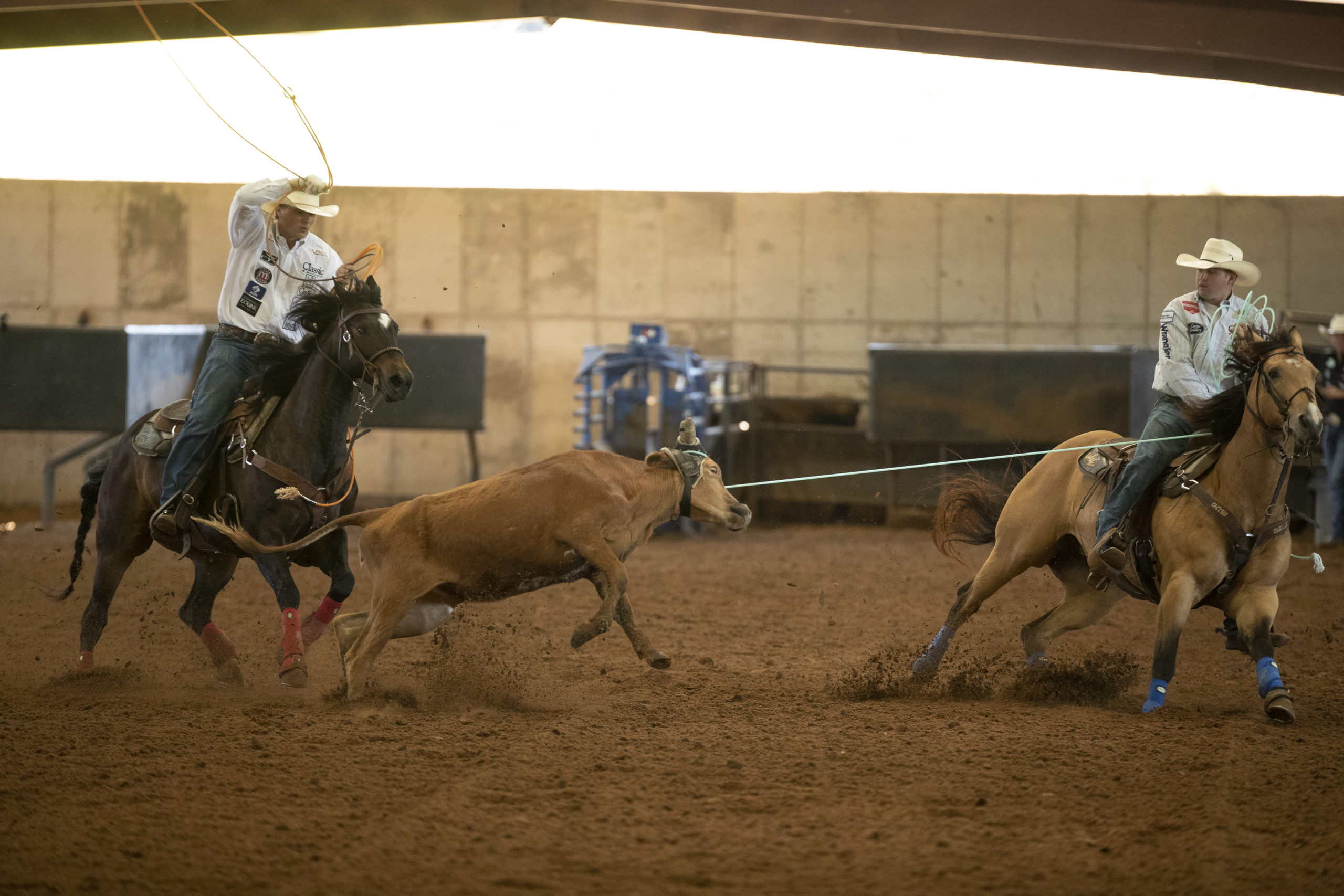This past year, I’ve been working on being as fast as possible without taking too big a chance with my rope. That means I’ve been working on cutting the extra movement out of the run without having to reach. I haven’t figured it out 100%, but I do know a lot of it has to do with how I ride my horse and how his footwork affects the run. I want to rope to eliminate the steers that take me out, and I don’t want to waste time on the good ones or be behind the ball on the bad ones. Here’s what I’m learning.
Read: The BENEFITS of a team roping Warm-Up Routine with Cody Snow
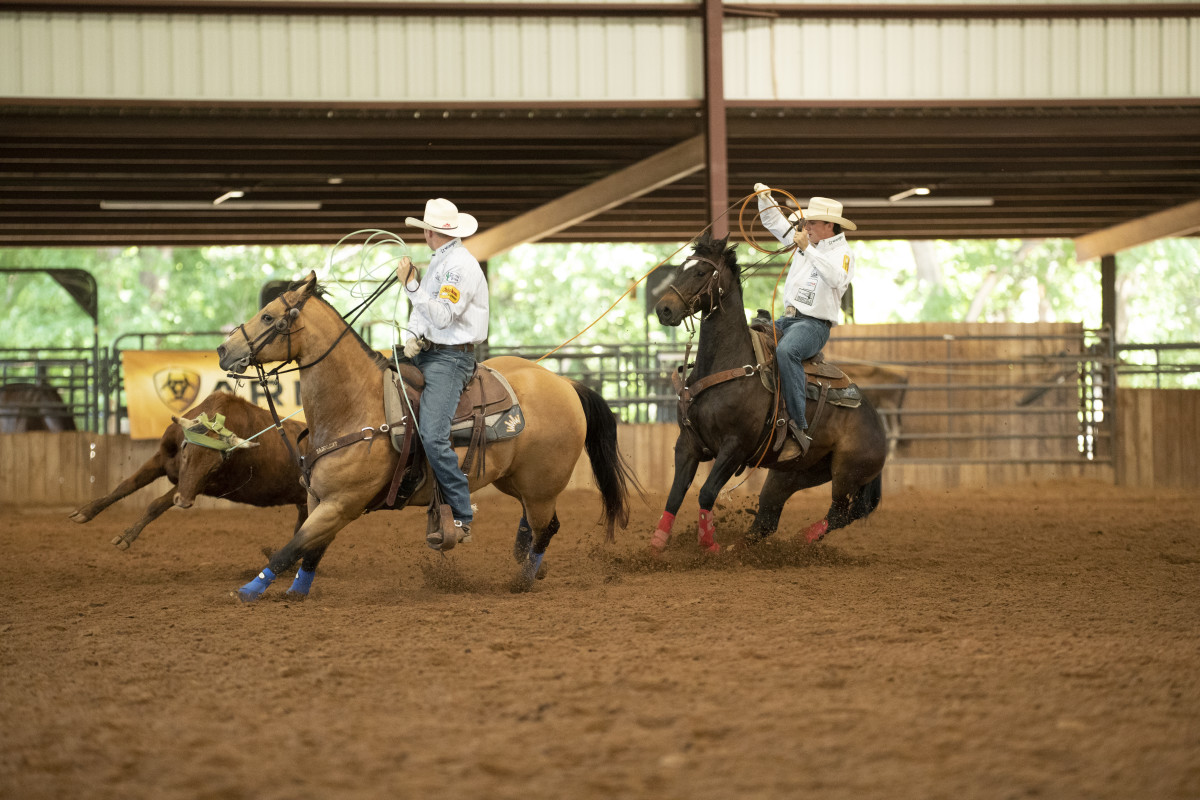
In the Barn
Eliminating wasted motion and time, for me and a lot of ropers, starts with trying to get a string of horses put together so I have a bunch that work the same to make the same run on. I want to be mounted when I leave the house. I try to find horses that fit me and not just make something work. I ride a bunch of different horses all the time, and I’m always trying to find ones that fit my style and work well. The head horse deal is a never-ending battle. I don’t want to get behind it, and I don’t want to be in a bind.
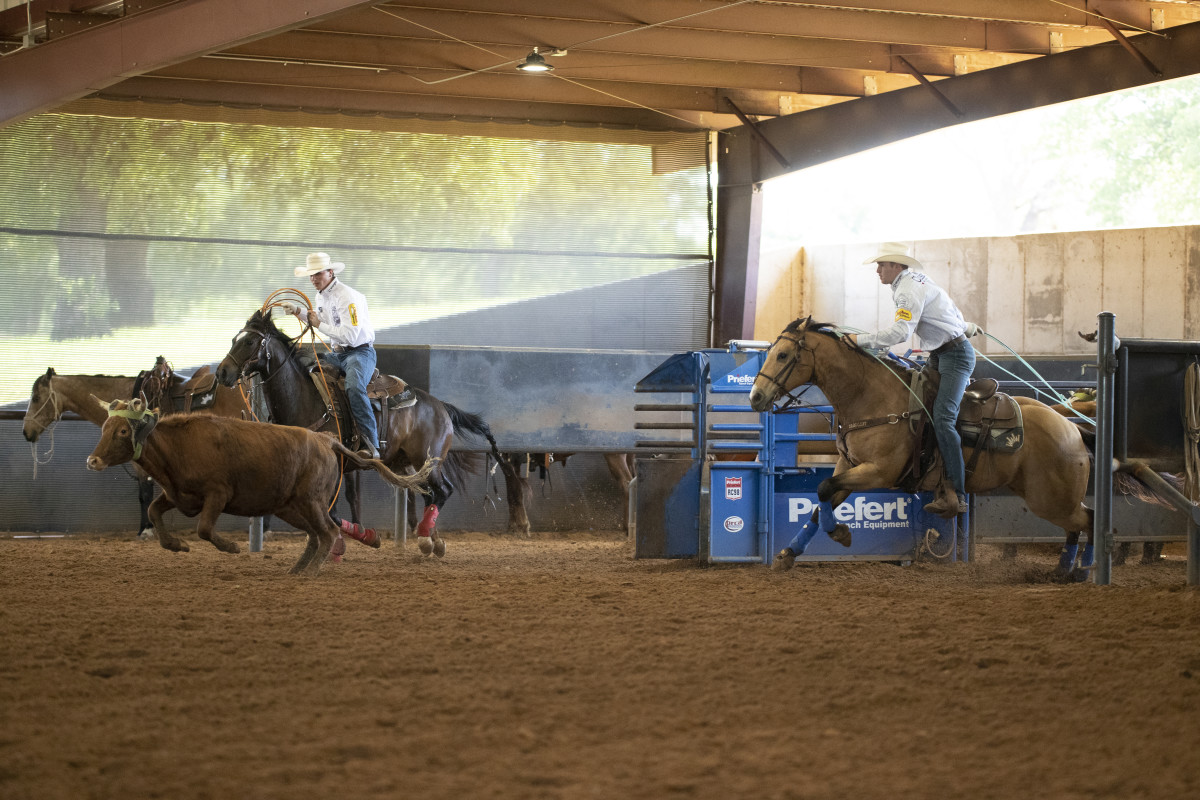
At the Line
If I break too far to the pin, I have to step out and head the steer. I’ve been trying to break wider, so I have a clearer go. Both of my horses are really easy to control where I’m going, so I have to work on where I point them—maybe a little left to the flag on the string barrier. I need to have my whole body up and square and not get over the front or chasing the steer with my body.
Listen: The Short Score BONUS: Round 7 Winners Cody Snow and Wesley Thorp
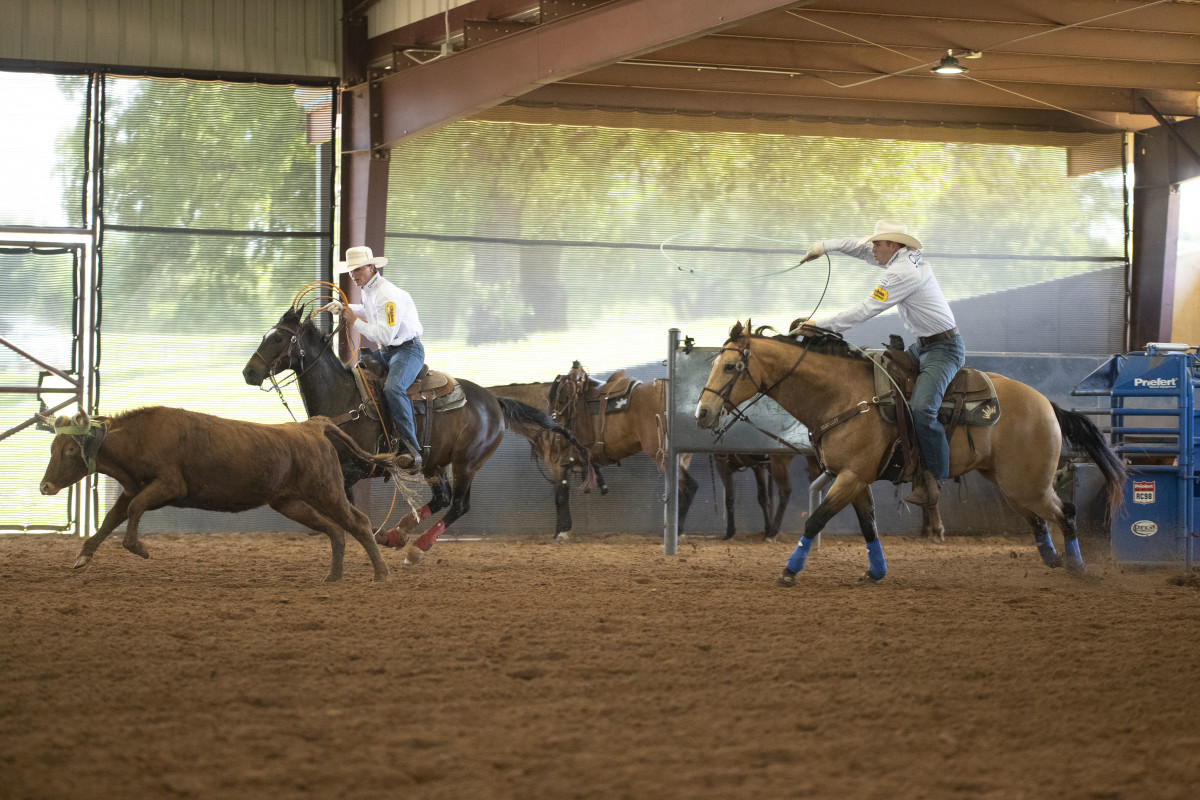
In the Throw
I’m working on how far I throw my rope to get the rope tight to the horns. I want to reach but keep everything tight to the horn at the same time. I don’t want to come across the line trying to reach, but I want to have my swing in a spot every time where I can reach if I need to. That means not having my tip too far down and my loop above the horns coming across the line. If the steer isn’t in a good spot, I want to be able to go another stride or two. That also means I want my horses working the same whether I’m reaching or running to the hip.
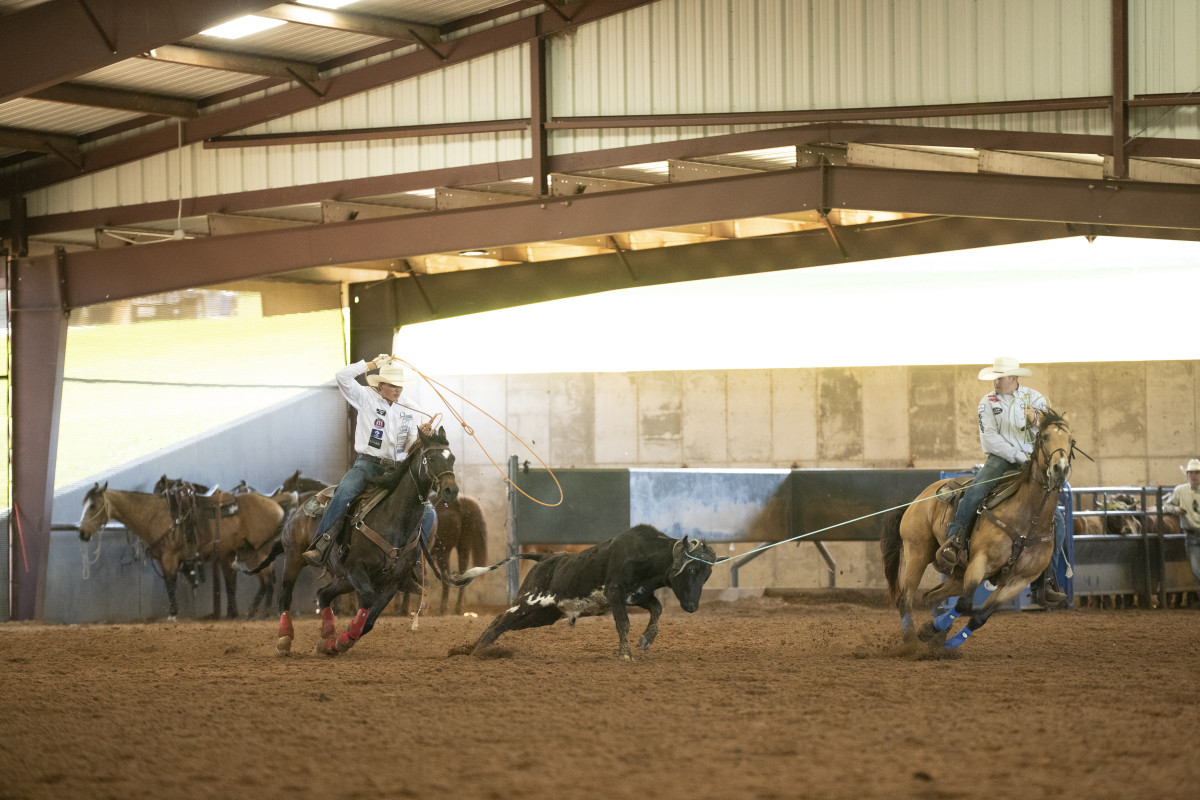
In the Corner
I want my horse to collect up when I get hold of the steer. I want my horse to pick himself up and shorten up his stride. That will square the steer up and let my partner get around it, giving him a more consistent throw. I want to get everything tight and get my horse’s hind end underneath him to keep the steer’s stride the same. In my riding, I want to keep my feet down to do that, pushing my horse where he’s supposed to go. I don’t want to use my upper body to get my horse to go forward. You’ll probably eventually get over the front of your horse, but if you’re practicing riding and using your legs, that will become your first instinct in competition. I want to keep my fundamentals in the back of my mind.
Read: Snow and Thorp Win First-Ever World Class Invitational Open
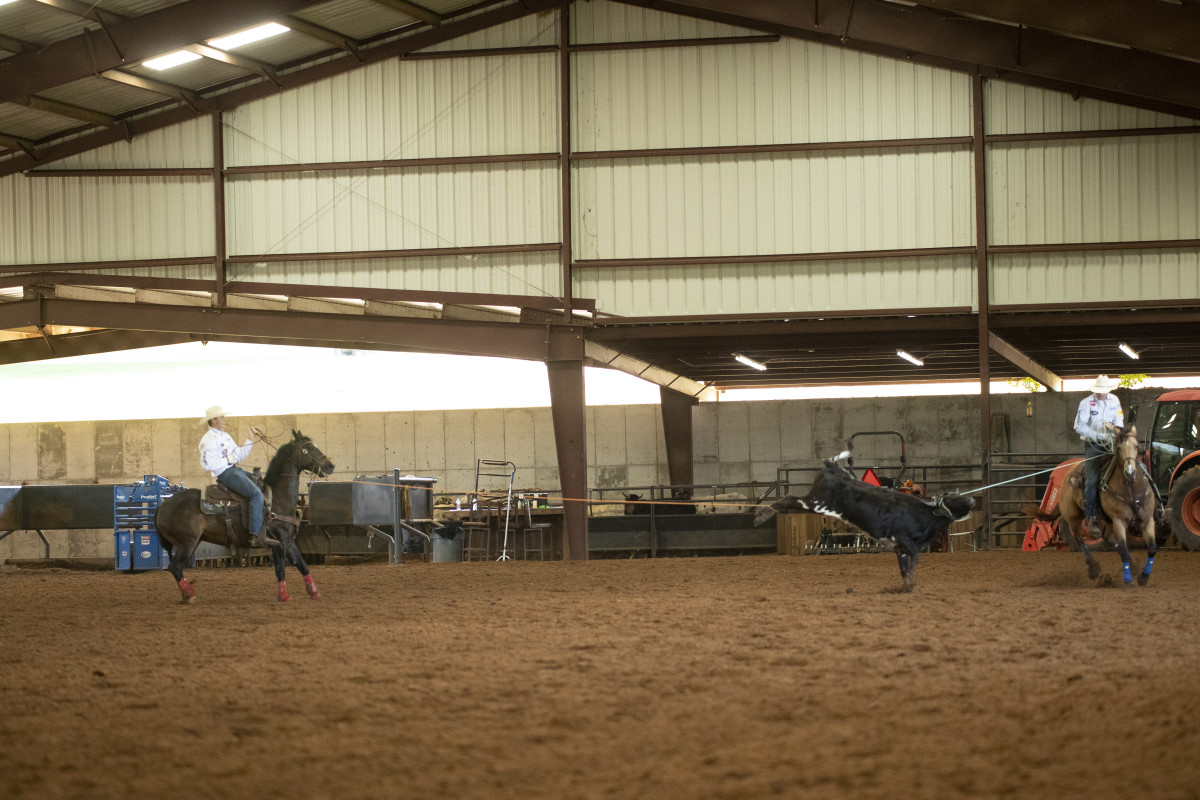
In the Finish
I think it’s important to keep control of the steer’s head even when the heeler gets a wrap. I want my horse to keep the rope tight. If the flagger sees a loose rope, you’ll win third or fourth instead of first. I work on that at the house. I will keep my horse moving and keep his confidence up to keep his footwork right. I don’t face them a bunch fast, but when I rope, I will un-dally or keep my horse moving sideways after I face to let them know the end of the run is right there. People will let their horse just kind of face in the practice pen, and that creates bad habits. I un-dally, get the footwork right with the pressure off the horn, and then I stay dallied, and I slide rope and let it come off. It shows my horse the release comes when she takes a step back. My mare will pull the steer even more when she faces. It’s the same thing heelers do. When you stop a horse, take one step back. That keeps your head horse working through the finish and shaves tenths off the finish—which can be the difference between first and not winning a check.




